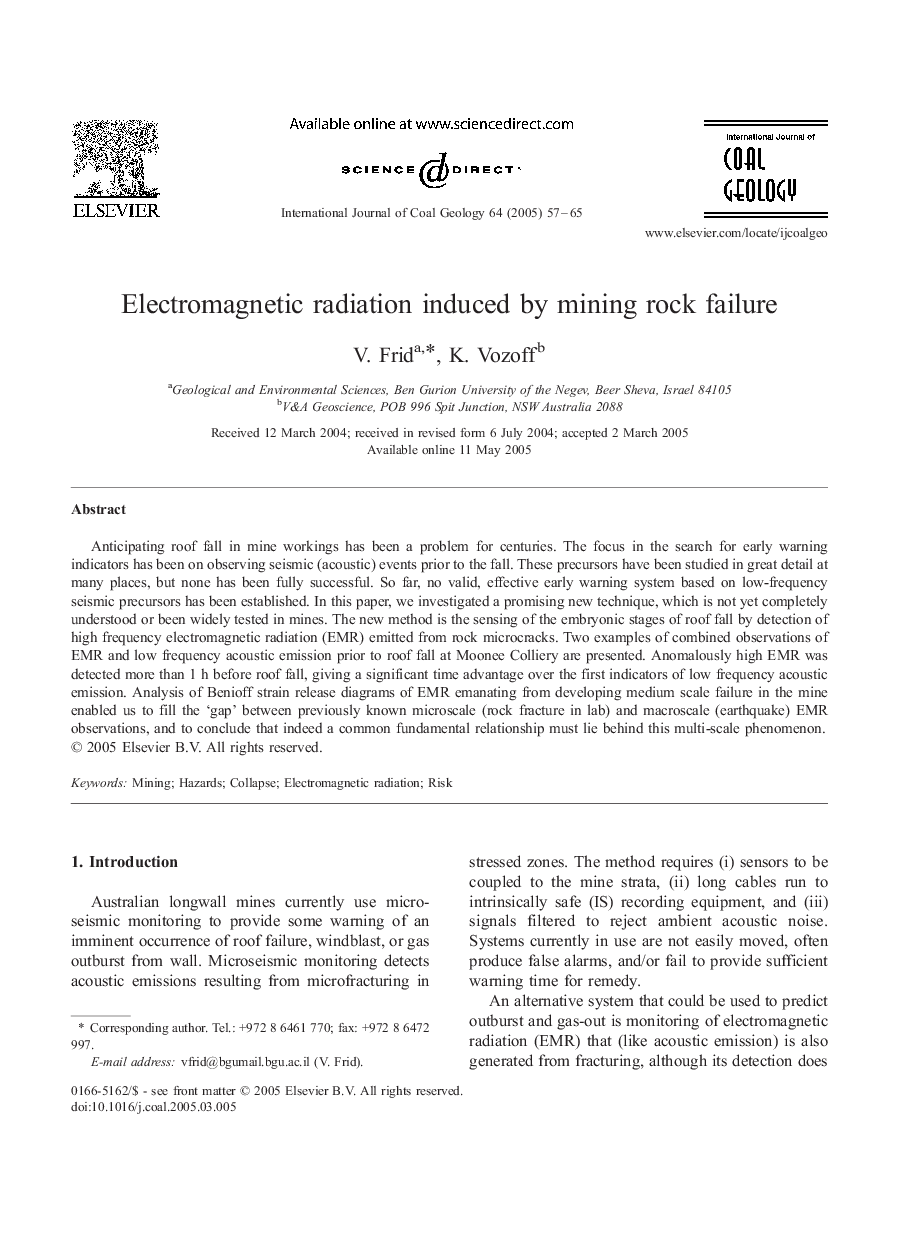| Article ID | Journal | Published Year | Pages | File Type |
|---|---|---|---|---|
| 9826113 | International Journal of Coal Geology | 2005 | 9 Pages |
Abstract
Anticipating roof fall in mine workings has been a problem for centuries. The focus in the search for early warning indicators has been on observing seismic (acoustic) events prior to the fall. These precursors have been studied in great detail at many places, but none has been fully successful. So far, no valid, effective early warning system based on low-frequency seismic precursors has been established. In this paper, we investigated a promising new technique, which is not yet completely understood or been widely tested in mines. The new method is the sensing of the embryonic stages of roof fall by detection of high frequency electromagnetic radiation (EMR) emitted from rock microcracks. Two examples of combined observations of EMR and low frequency acoustic emission prior to roof fall at Moonee Colliery are presented. Anomalously high EMR was detected more than 1 h before roof fall, giving a significant time advantage over the first indicators of low frequency acoustic emission. Analysis of Benioff strain release diagrams of EMR emanating from developing medium scale failure in the mine enabled us to fill the 'gap' between previously known microscale (rock fracture in lab) and macroscale (earthquake) EMR observations, and to conclude that indeed a common fundamental relationship must lie behind this multi-scale phenomenon.
Related Topics
Physical Sciences and Engineering
Earth and Planetary Sciences
Economic Geology
Authors
V. Frid, K. Vozoff,
